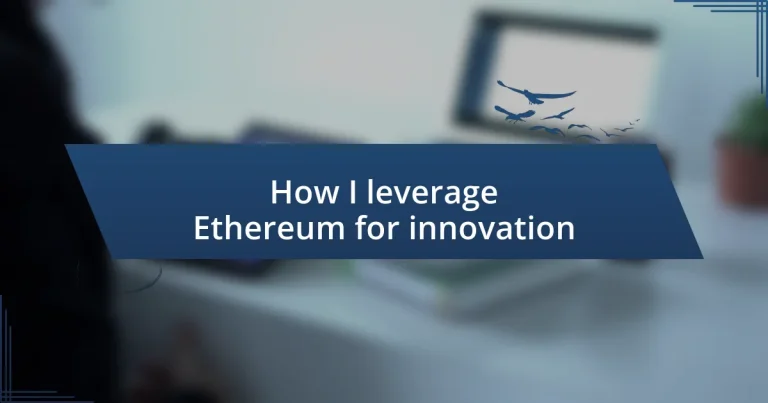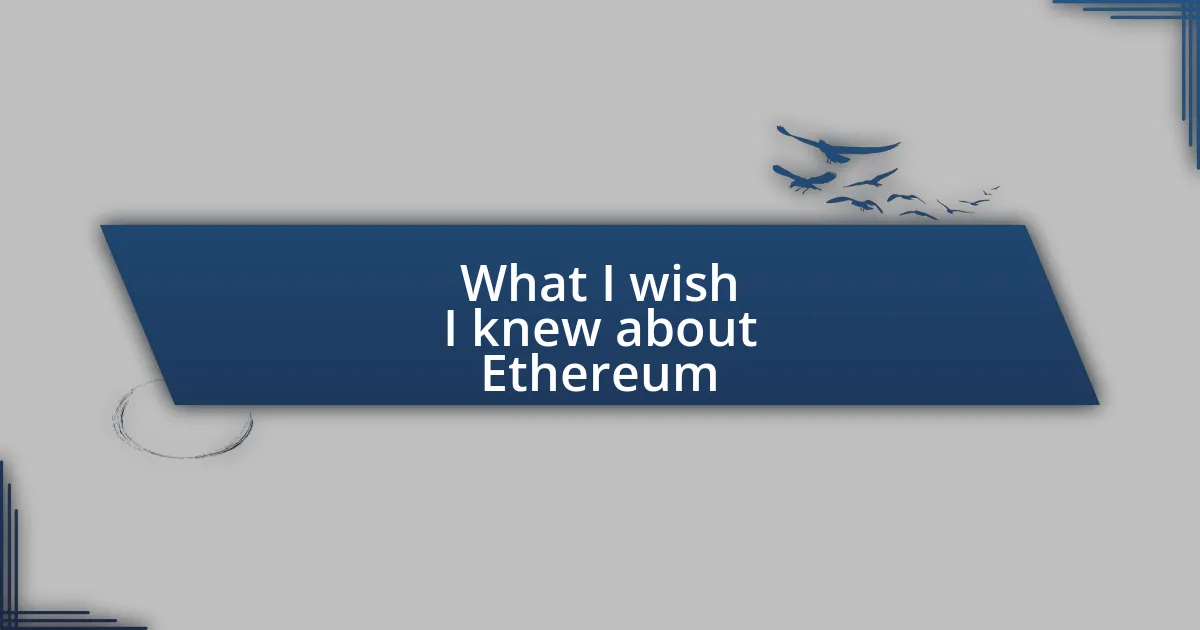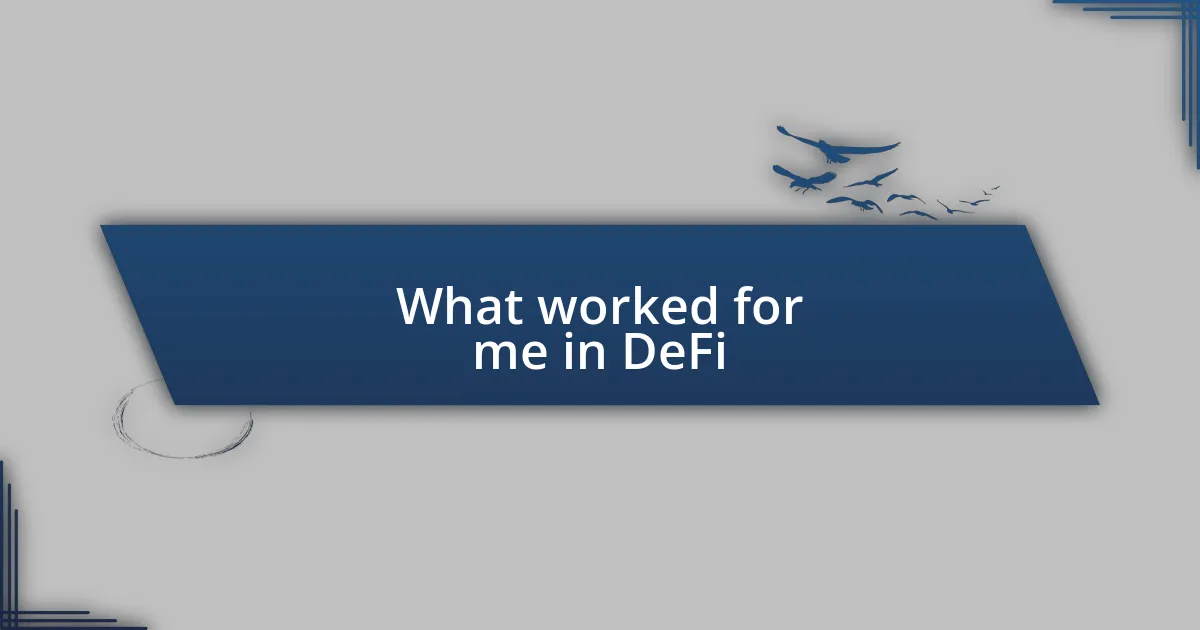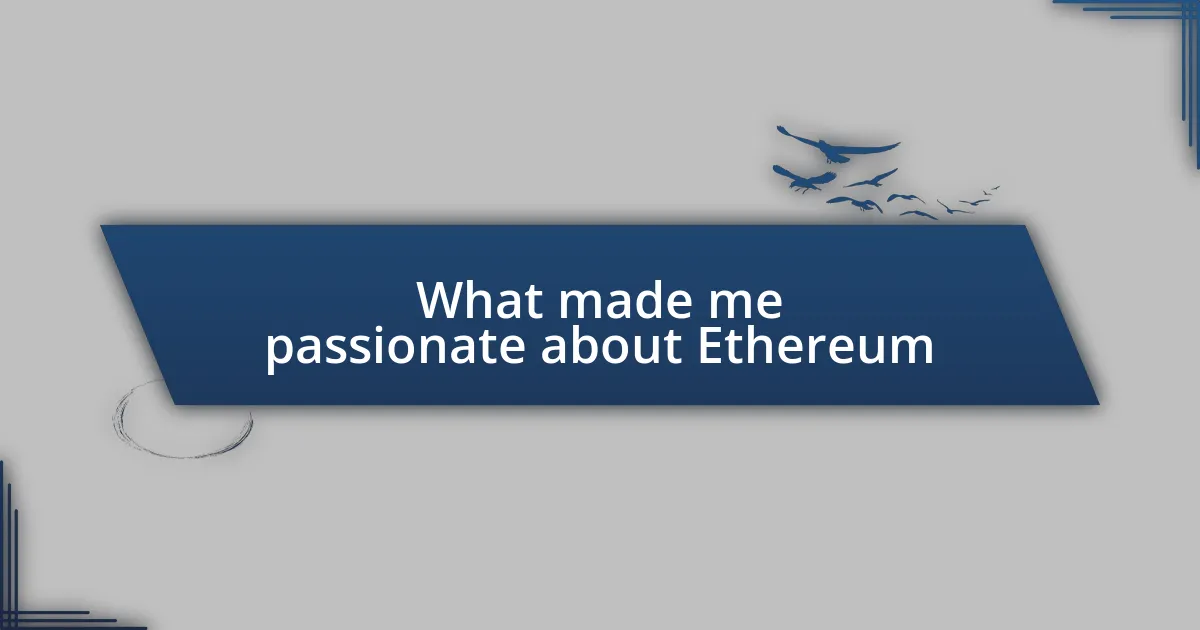Key takeaways:
- Ethereum enables the development of decentralized applications (dApps) and smart contracts, which automate processes and enhance user trust.
- Integration of Ethereum in various industries, such as supply chain and healthcare, improves transparency, efficiency, and data management.
- Continuous innovation in Ethereum, including upgrades like Ethereum 2.0, aims to enhance scalability, energy efficiency, and user accessibility.
- Measuring success involves both quantitative metrics, such as user engagement, and qualitative feedback that reflects user empowerment and satisfaction.
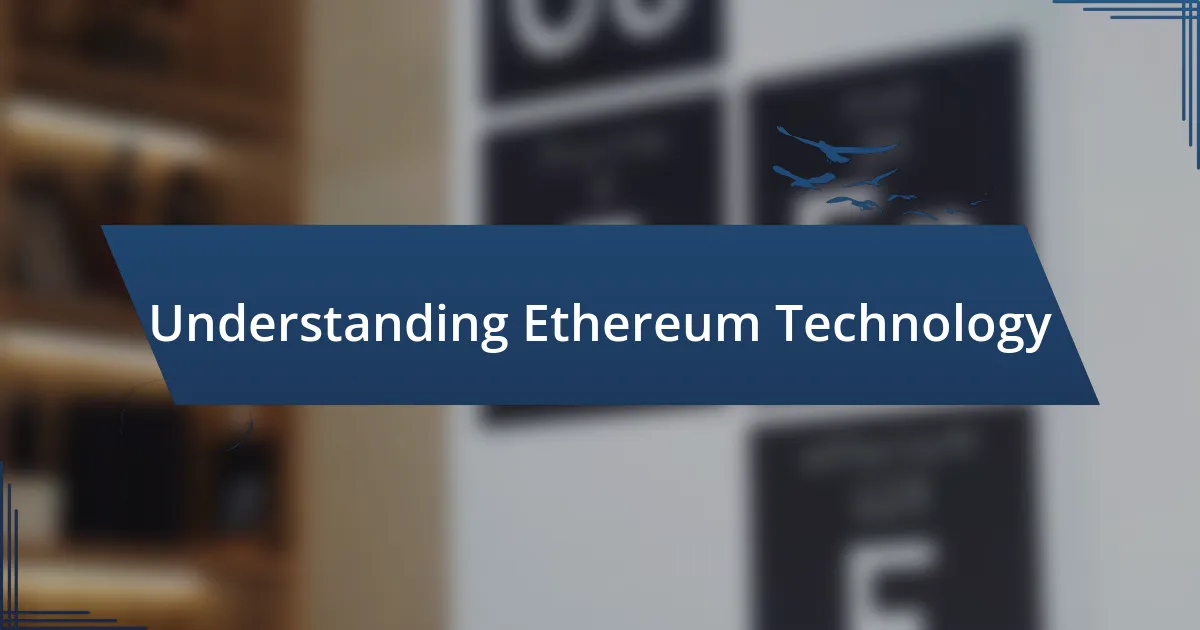
Understanding Ethereum Technology
Ethereum, at its core, is a decentralized blockchain platform that enables developers to build and deploy smart contracts—self-executing contracts with the terms directly written into code. When I first explored Ethereum, the idea that I could create applications without a central authority sparked my imagination. Isn’t it fascinating to think about how this technology could disrupt traditional industries by removing intermediaries?
The Ethereum network operates on its cryptocurrency, Ether, which fuels transactions and computational services. I remember my initial confusion about gas fees—charges that users pay to execute transactions or perform functions on the network. Understanding that these fees vary based on network congestion was a bit of a lightbulb moment for me; it showed how real-time economic principles apply even in a digital world.
What’s particularly compelling about Ethereum is its commitment to continuous evolution, with upgrades like Ethereum 2.0 aimed at improving scalability and energy efficiency. This shift to a proof-of-stake model not only reduces the energy consumption associated with mining but also makes participation more accessible. Have you ever wondered how these innovations will transform our digital landscape? From my perspective, it’s just the beginning of a more sustainable and inclusive internet.
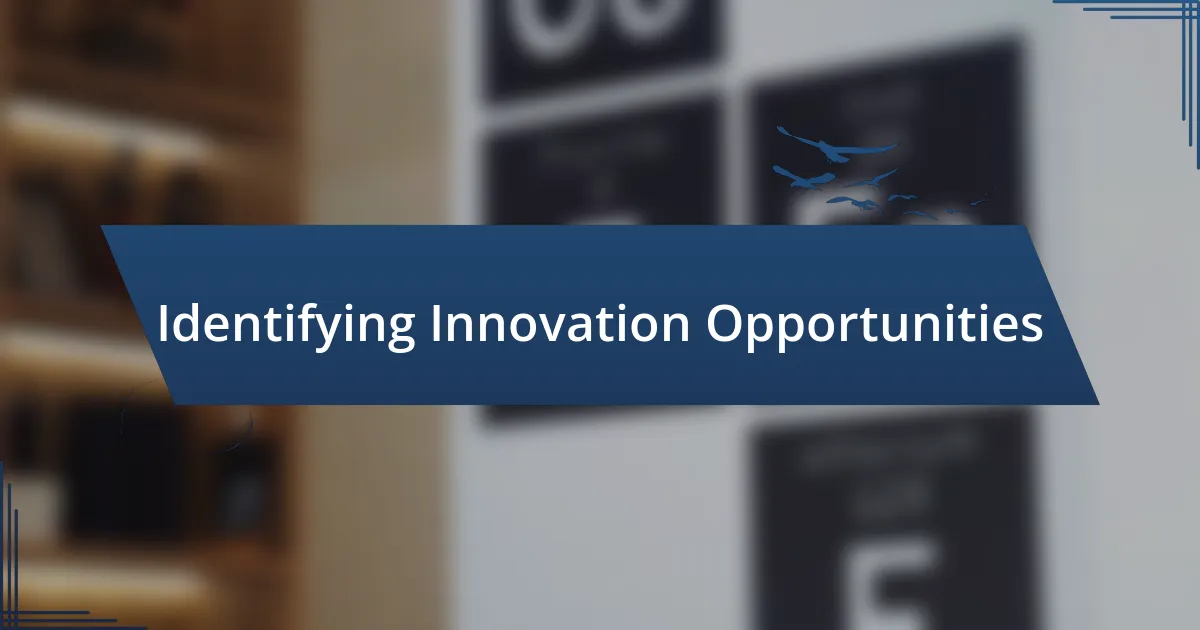
Identifying Innovation Opportunities
Identifying opportunities for innovation within the Ethereum ecosystem involves keen observation of emerging trends and user needs. As I dive into various projects and communities, it becomes evident that the decentralized finance (DeFi) movement is ripe with potential. For instance, I often find myself brainstorming how to enhance user experiences in lending platforms. It’s intriguing to think about how even minor adjustments could lead to significant improvements in user engagement and trust.
In my experience, successful innovation often arises from collaboration across different sectors. During one of my recent meetups, I had the chance to connect with developers from the healthcare industry exploring how Ethereum can streamline patient data management. This interaction not only broadened my perspective but also ignited sparks of creativity as I envisioned how blockchain could protect sensitive information while granting patients more control. Have you ever considered how your unique expertise might intersect with blockchain technology? That blend of knowledge can reveal innovative pathways.
To further illustrate this process, I like to create a comparison of traditional methods versus potential Ethereum-based solutions. Identifying these gaps is crucial for sparking innovation.
| Traditional Method | Ethereum-Based Solution |
|---|---|
| Centralized Data Management | Decentralized Patient Control |
| High Intermediary Fees | Reduced Costs via Smart Contracts |
| Lack of Transparency | Immutable Public Records |
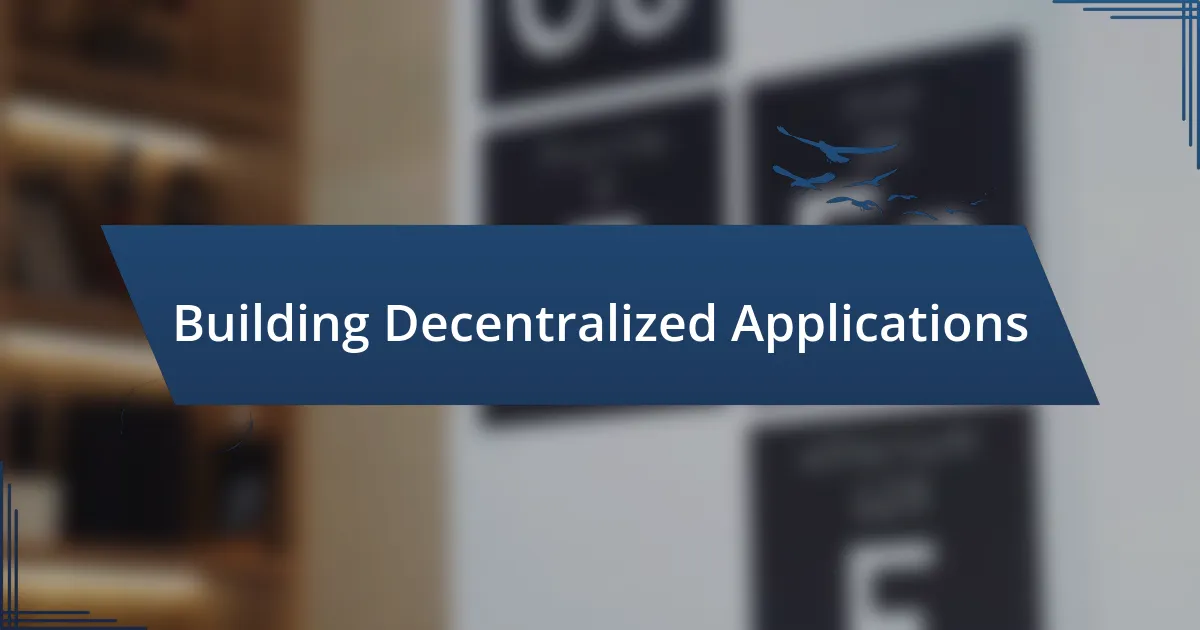
Building Decentralized Applications
Building decentralized applications (dApps) within the Ethereum ecosystem has opened up a realm of possibilities for innovation. When I first began developing dApps, I was struck by the sheer potential of smart contracts to automate and simplify complex processes. For instance, during a hackathon last summer, my team and I created a voting platform, which illustrated how blockchain can enhance transparency and trust in civic engagement. Witnessing users interact with the application was exhilarating; they appreciated not just the functionality, but the empowerment that came from having their voices heard securely.
Here are some key considerations for building effective dApps:
- User Experience: Design intuitive interfaces to ensure accessibility for all users.
- Security: Prioritize robust security measures to safeguard data and maintain user trust.
- Scalability: Consider how your app can handle increasing user numbers without compromising performance.
- Interoperability: Build dApps that can interact with other services in the Ethereum ecosystem seamlessly.
- Community Feedback: Engage users early on to gather insights and refine your application based on real-world needs.
With each project, I’ve become more aware of the importance of community input; it transforms ideas into applications that genuinely resonate with users. It’s fascinating how each line of code can facilitate a broader conversation about social transformation and user empowerment.
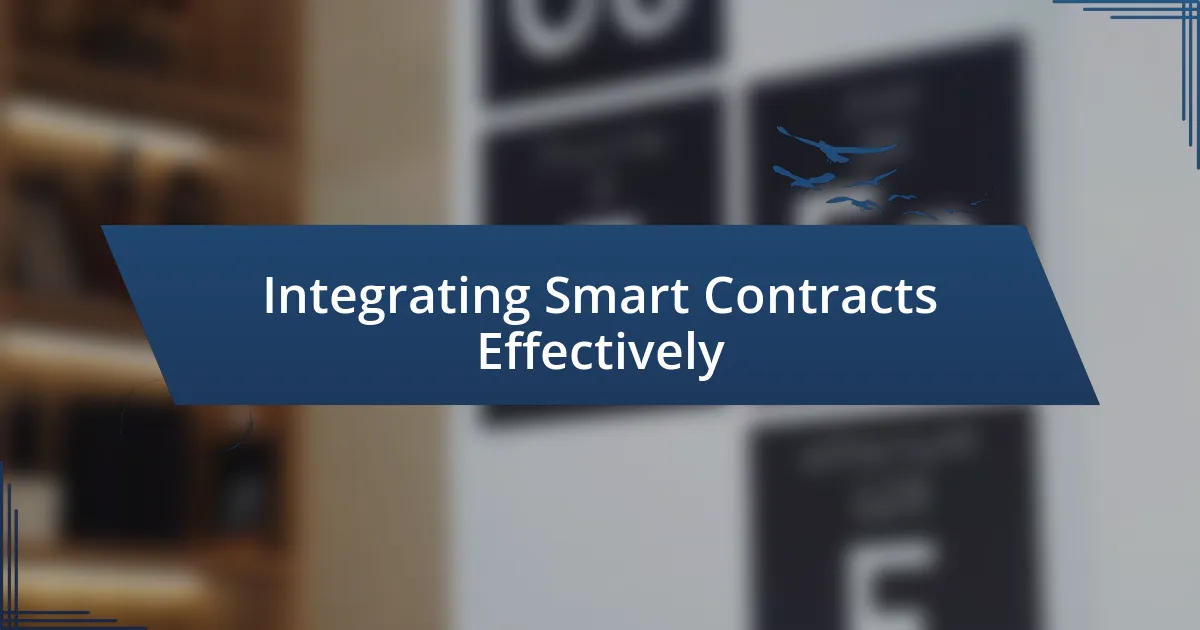
Integrating Smart Contracts Effectively
Integrating smart contracts into decentralized applications requires a thoughtful approach. Early in my journey, I learned to build a voting mechanism that used smart contracts for real-time tallying. The thrill of watching votes get counted automatically was eye-opening; it made me realize just how much efficiency and trust could be embedded into a simple process.
One aspect I’ve come to appreciate is the importance of proper testing. During one project, our team faced a critical bug that could have compromised user trust. It was a stark reminder that understanding the intricacies of smart contracts is paramount; even a minor oversight can lead to significant consequences. Have you ever wondered how many great ideas have fallen flat due to a lack of thorough testing?
Moreover, educating users about how smart contracts function is key to effective integration. I vividly remember a workshop where I explained this technology to a group of non-tech-savvy individuals. Their eyes lit up with understanding as they saw the real-world applications unfold. It reinforced my belief that bridging the knowledge gap enhances user engagement and ultimately drives innovation forward.
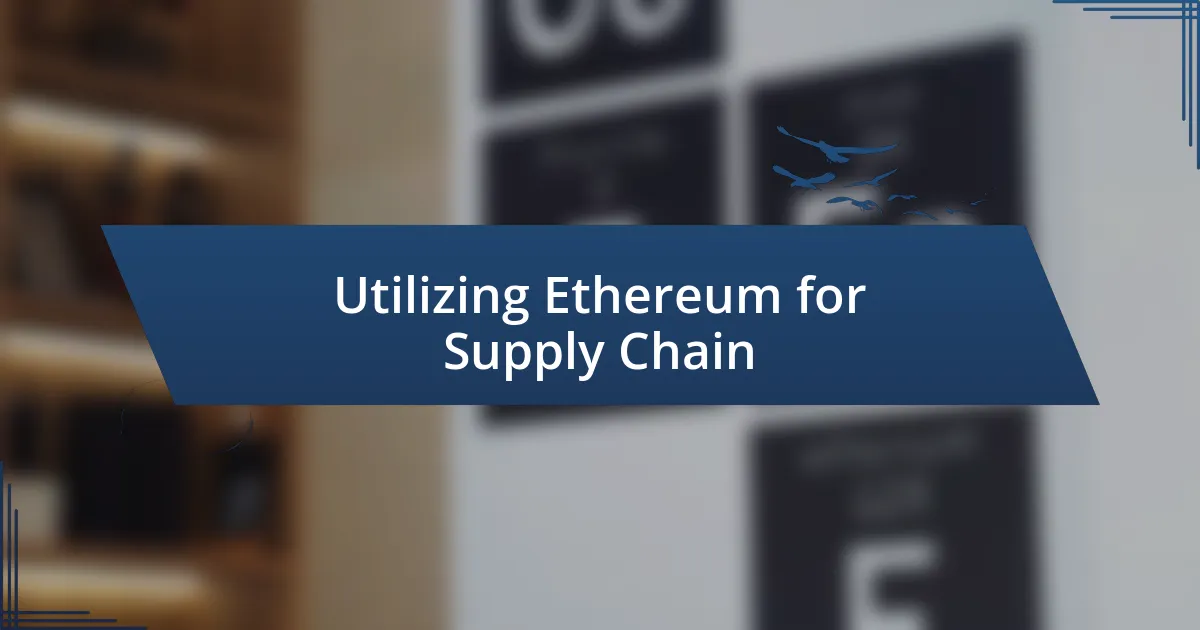
Utilizing Ethereum for Supply Chain
Utilizing Ethereum in supply chain management can bring unprecedented transparency and accountability. I recall a project where we implemented an Ethereum-based tracking system for perishable goods. Customers could scan a QR code to see the entire journey of their food, from farm to table, and it was rewarding to witness their appreciation for this level of clarity.
One of the most intriguing aspects of using Ethereum is the ability to create tamper-proof records. In one instance, I worked with a logistics provider who faced challenges in verifying shipment authenticity. By leveraging Ethereum’s blockchain, we established immutable records that stakeholders could access, which significantly reduced fraud incident reports. Have you ever thought about how much trust is built when all parties can access verifiable data?
Furthermore, the efficiency gains from smart contracts in supply chain processes cannot be overstated. I remember collaborating with a manufacturer who struggled with delayed payments due to paperwork bottlenecks. Implementing smart contracts automated invoicing and payment processes, leading to a remarkable reduction in delays. This experience made me realize how technology can directly impact relationships and streamline operations in ways that benefit everyone involved.
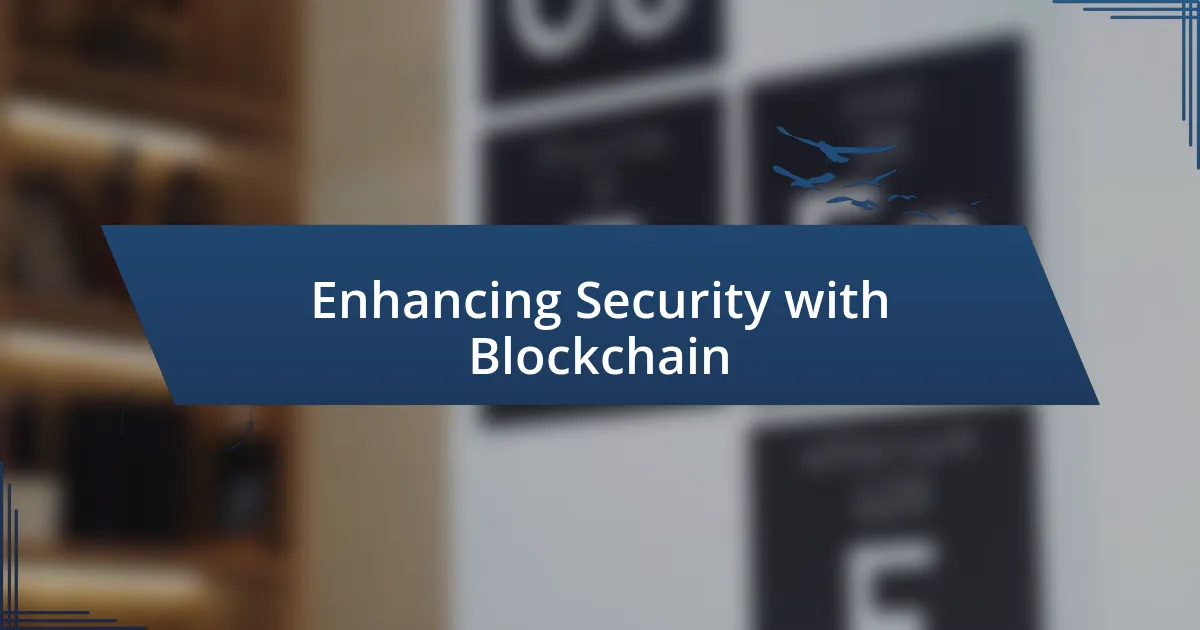
Enhancing Security with Blockchain
Enhancing security with blockchain significantly changes how we approach data integrity and confidentiality. In my experience, after adopting an Ethereum-based solution for a financial service provider, we noticed a remarkable shift in safeguarding sensitive information. The decentralized nature of the blockchain meant that data wasn’t stored on a single point that could be easily hacked; instead, it was spread across a wide network, making unauthorized access practically impossible. Doesn’t it feel reassuring to know that technology can offer this level of security?
Moreover, I’ve witnessed firsthand how blockchain’s transparent audit trails foster a culture of accountability. While working with a government agency, we implemented a blockchain system to track public fund disbursements. It was thrilling to see how every transaction was recorded transparently, allowing us to trace the flow of funds effortlessly. The thrill of restoring public trust through enhanced transparency is truly unmatched. Don’t you think that increased visibility could transform how communities view their institutions?
Lastly, smart contracts on Ethereum not only enhance security but also automate compliance with regulations in real time. I remember partnering with a regulatory body that needed to ensure firms adhered to strict standards. By incorporating smart contracts, we could automate compliance checks, alerting parties instantly when discrepancies occurred. The sense of peace this brought to both regulators and businesses was tangible. Isn’t it inspiring how innovation can create a safer and more aligned ecosystem for everyone?
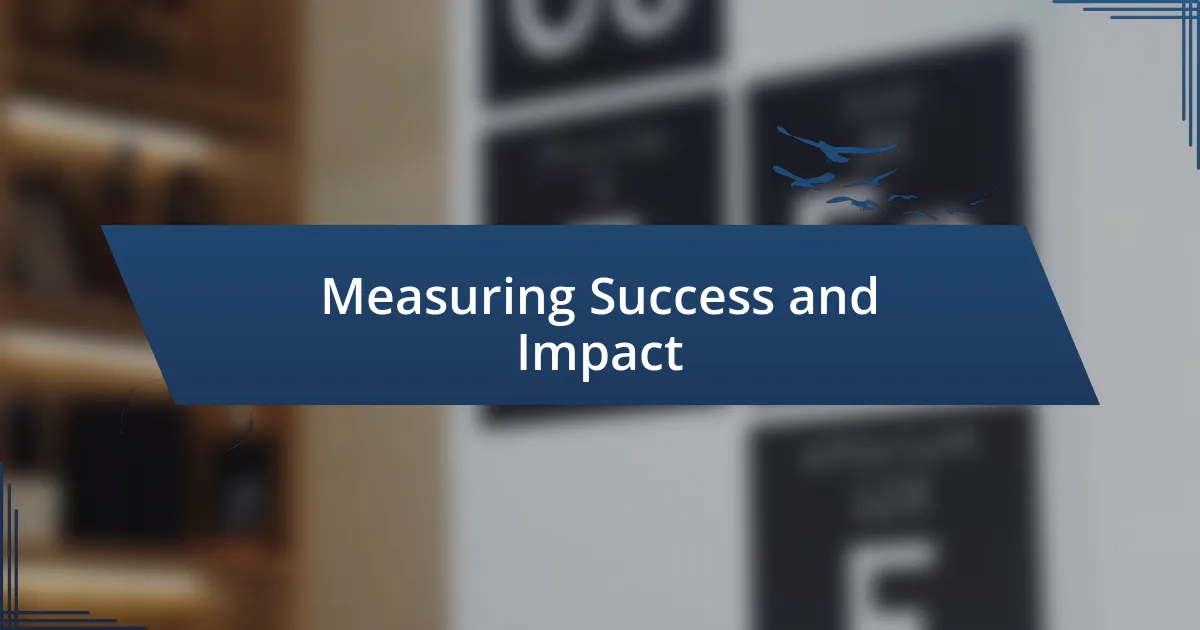
Measuring Success and Impact
Measuring success and impact in my Ethereum projects often involves analyzing user engagement and satisfaction metrics. For instance, after launching a decentralized application (dApp) focused on supply chain transparency, I saw a notable uptick in user interactions within the first few months. This data didn’t just reflect usage; it told a story of newfound trust among stakeholders, which I found deeply fulfilling. When users expressed their appreciation for the level of visibility they gained, it underscored the project’s real-world significance.
I also rely on tailored performance indicators to track the impacts of new innovations. During a collaboration with a healthcare provider, we rolled out a blockchain-based patient record system. I discerned success through a marked reduction in record retrieval times, which not only enhanced operational efficiency but also significantly improved patient care. Have you ever considered how the speed of information flow can elevate the quality of service?
In my experience, the qualitative feedback from users has been just as valuable as the quantitative data. After implementing a decentralized voting system, I attended a community forum where residents shared their excitement about participating in a more secure electoral process. Hearing their stories of empowerment made all the hard work worthwhile. It made me reflect: isn’t the true measure of success the transformation we see in people’s lives?

